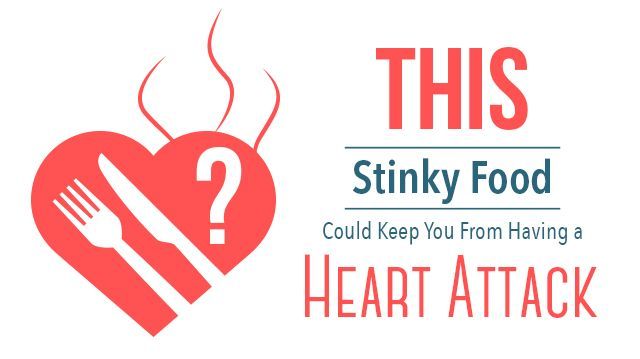
A stinky, cheese-like Japanese food called natto, produced by fermenting soybeans with the bacteria Bacillus subtilis is behind a potent anti-clotting enzyme. This enzyme and its noted health benefits could potentially treat and prevent cardiovascular disease.
Let’s begin with natto
To North Americans, natto is an acquired taste because of its pungent ammonia-like smell and somewhat slimy, stringy and sticky texture. But in Japan, natto is a traditional cheese-like delicacy, popular for its unique flavor, aroma and health benefits. Natto is prepared by steaming or boiling whole, previously soaked soybeans. Bacillus subtilis (bacteria) is then added to the mixture, which ferments over time, giving it that acquired taste and smell.
The anticlotting ability of nattokinase
Nattokinase, a potent fibrinolytic (anticlotting) enzyme is extracted from natto. It’s best known for its anticlotting ability and cardiovascular health benefits. It’s thought to rejuvenate healthy fibrin metabolism, which reduces blood clotting, making it a powerful, all-natural enzyme. Nattokinase may be beneficial for preventing heart disease and stroke — and maybe, deep vein thrombosis — however, more research is needed for this hypothesis.
Although other soy foods contain enzymes, only natto contains the specific nattokinase enzyme discovered by Japanese researcher Dr. Hiroyuki Sumi. Dr. Sumi spent several years searching for a natural thrombolytic agent that could successfully dissolve blood clots associated with heart attacks and stroke. Then in 1980, after testing more than 173 natural foods, Dr. Sumi found the answer when he decided to bring a portion of his breakfast (natto) to the lab for testing.
Research suggests that nattokinase helps the body break up and dissolve the unhealthy coagulation of blood. What’s more, it’s thought that nattokinase has four times greater fibrinolytic activity than plasmin, an enzyme in the blood designed to break down blood clots.
Nattokinase for heart attack and stroke
Cardiovascular disease is the leading global cause of death, according to the American Heart Association (AHA), accounting for more than 17.3 million deaths per year — a number that is expected to grow to more than 23.6 million by 2030. In the US alone, someone dies from heart disease every 84 seconds. The direct and indirect costs of cardiovascular diseases and stroke total more than $316.6 billion.
Consuming unhealthy foods that increase bad cholesterol puts people at high risk for blood clots, heart disease and stroke. Nattokinase has the ability to break down the adhesive substance that makes plaque in the arteries sticky. Therefore, nattokinase acts to prevent and reverse blood clots and plaque buildup in the arteries, suggests Dr. Edward Group of the Global Healing Center.
Nattokinase instead of aspirin?
According to the AHA, experts agree that aspirin can help stop a second heart attack or stroke, but for those people who have never had a heart attack, research suggests that aspirin risks may offset the benefits. Even the US Food and Drug Administration issued an advisory warning consumers that the over-the-counter drug should not be used for primary prevention of heart attacks and strokes.
Nattokinase, according to Dr. Group, is an enzyme that can break down harmful clots, potentially offering individuals an alternative to pharmaceutical drugs and the negative side effects often associated with them. However, it’s important to note, aspirin is extremely well researched, and at the moment, no comparative evidence exists between nattokinase and aspirin. So, consult your physician or health-care practitioner prior to making a switch.
Nattokinase for high blood pressure
A 2008 study published in Hypertension Research, the official journal of the Japanese Society of Hypertension, examined the effects of nattokinase on blood pressure in subjects with prehypertension or stage 1 hypertension. Eighty-six people ranging in age from 20 to 80 years old with untreated systolic blood pressure received either a supplement of nattokinase (2,000 FU/capsule) or a placebo capsule for eight weeks.
The placebo-controlled trial showed that taking nattokinase supplements resulted in a reduction in systolic blood pressure and diastolic blood pressure. This research suggests that taking nattokinase daily for eight weeks can reduce blood pressure in people with hypertension.
How the body absorbs nattokinase
A pilot study conducted in Oakland, California analyzed the movement of nattokinase (through and out) the human body, following a single, oral, daily dose. Study subjects included 11 healthy participants — five males and six females, ages 21–65. A single oral, softgel dose of nattokinase (100 mg) was administered daily.
Study participants were observed swallowing the supplement, and then blood samples were collected. Participants returned at 2, 4, 8, 12, 24 and 48 hours after ingesting the supplement for subsequent blood draws. Nattokinase was found in participants’ bloodstream hours after it had been administered. This provided evidence that nattokinase can be measured directly in the blood of humans.
How much nattokinase a person should take depends on several factors, such as age, health and other conditions, according to WebMD. However, currently there is not enough scientific information to determine an appropriate range of doses. Before using, make sure to follow directions on product labels and consult your physician or pharmacist prior to using nattokinase.
Natto has been used as a folk remedy for heart disease and the circulatory system for hundreds of years in Japan. Today, backed by solid research, the extracted enzyme nattokinase may once again prove to play an important role as a natural alternative to pharmaceuticals — and unwanted side effects.
—Katherine Marko
Katherine Marko is a freelance writer, author and blog creator. Her areas of expertise include food, health, style, beauty, business and nutrition. Marko holds a Bachelor of Arts in English, a diploma in photography, graphic design and marketing, and certification in esthetics.
Sources:
http://draxe.com/natto
http://www.ncbi.nlm.nih.gov/pubmed/23709455
http://www.cdc.gov/dhdsp/data_statistics/fact_sheets/docs/fs_strokesigns.pdf
http://www.jafra.gr.jp/eng/sumi.html
http://www.ncbi.nlm.nih.gov/pubmed/12620531
http://www.heart.org/idc/groups/ahamah-public/@wcm/@sop/@smd/documents/downloadable/ucm_480086.pdf
http://news.heart.org/heart-disease-aspirin-therapy
http://www.fda.gov/Drugs/ResourcesForYou/Consumers/ucm390574.htm
http://www.ncbi.nlm.nih.gov/pubmed/2123064
http://www.ncbi.nlm.nih.gov/pubmed/12850244
http://www.ncbi.nlm.nih.gov/pubmed/18971533
http://www.webmd.com/vitamins-supplements/ingredientmono-1084-nattokinase.aspx?activeingredientid=1084&

